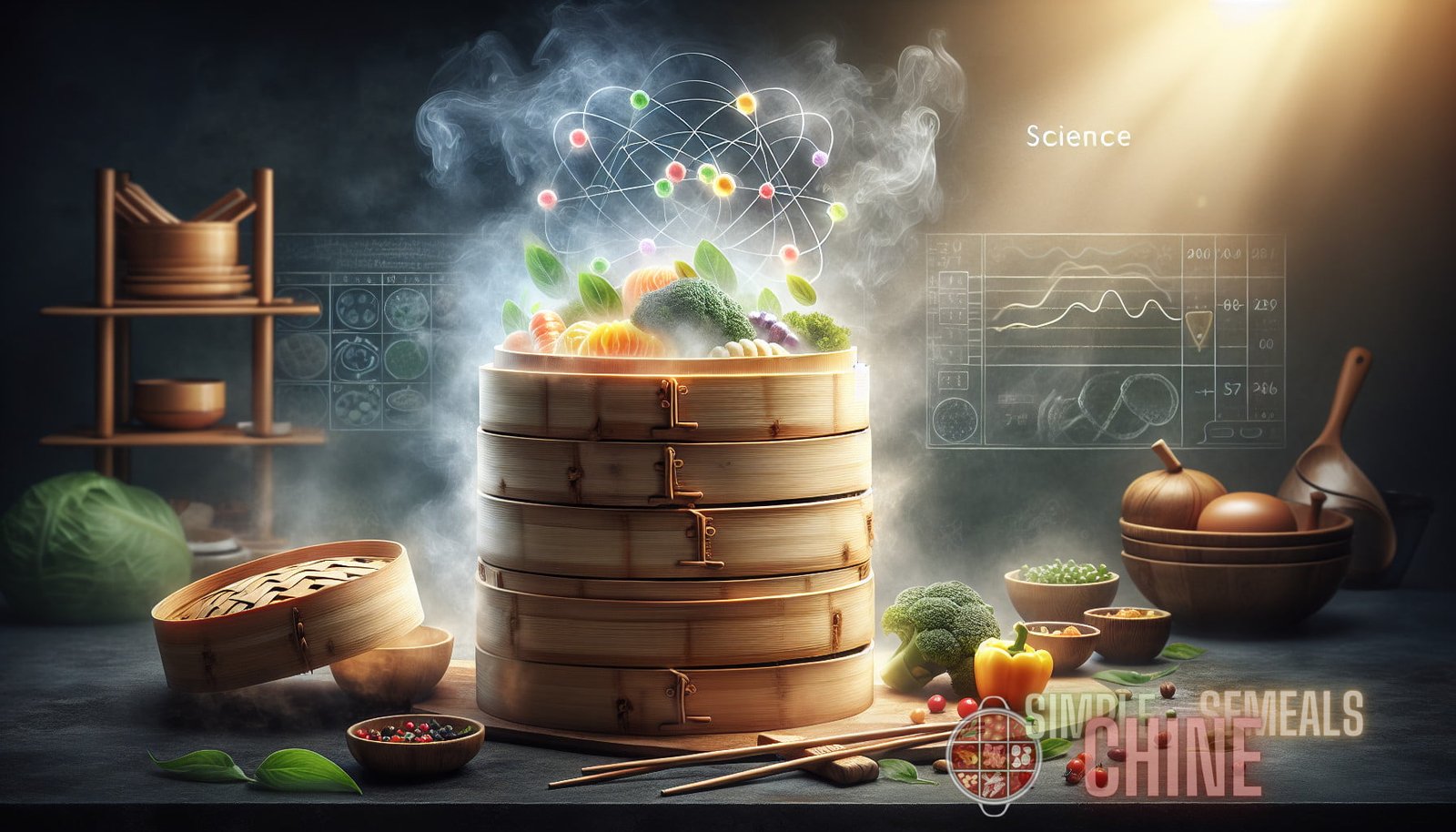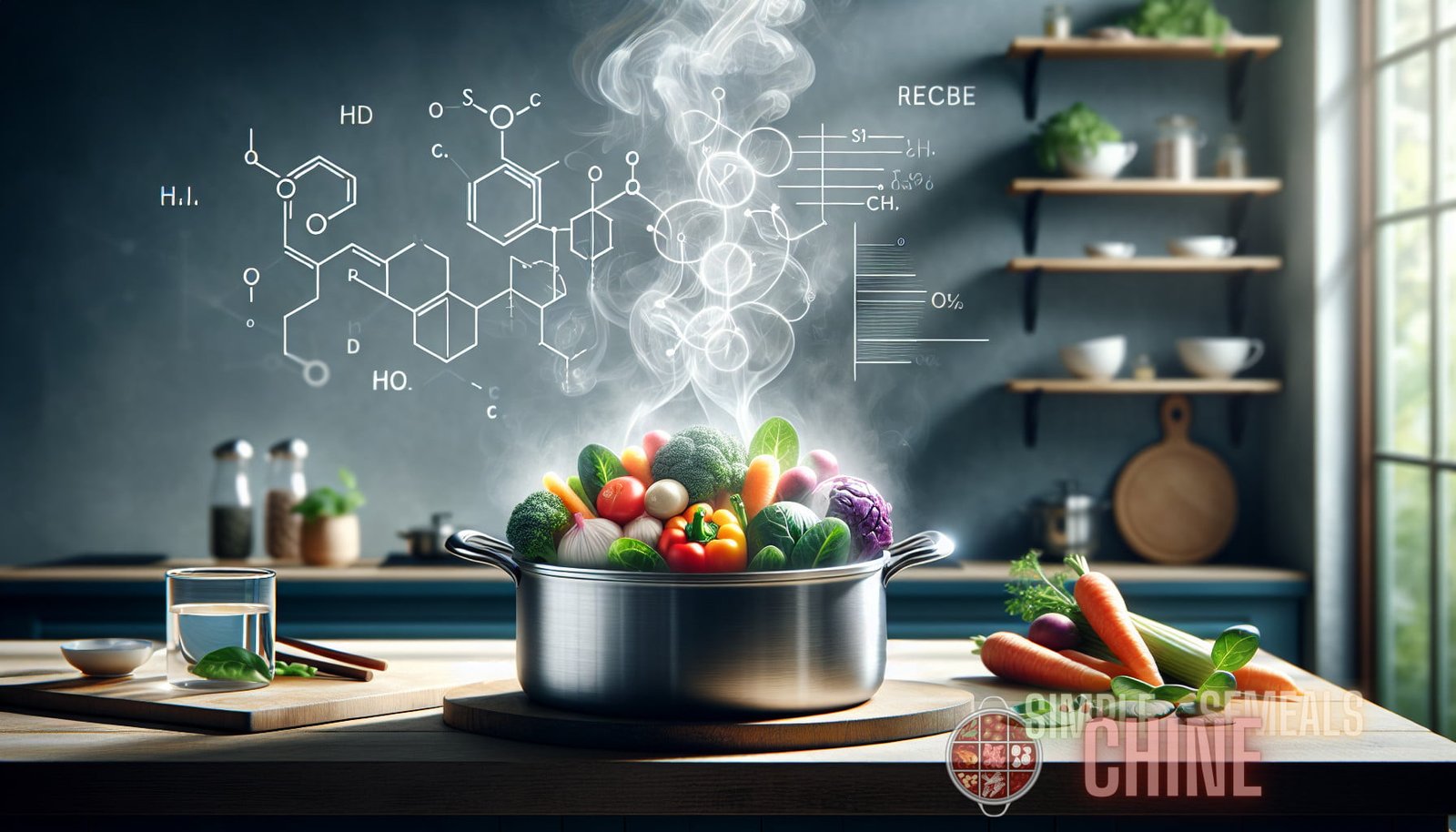Introduction
Steaming has been a popular cooking method for centuries, recognized for its ability to preserve nutrients and enhance flavors. This gentle cooking technique involves using steam to cook food, resulting in moist, tender, and flavorful dishes. But what is the science behind steaming? How does it infuse flavors and provide health benefits? In this article, we will delve deep into the secrets of steaming, uncovering the culinary and scientific principles that make steam cooking so effective. Whether you’re a seasoned chef or a cooking enthusiast, this article will provide you with valuable insights into the science of steaming.
Benefits of Steaming
Steaming offers a wide range of benefits, making it a popular choice for health-conscious individuals and culinary enthusiasts alike. Here are some of the key advantages of steam cooking:
- Preservation of Nutrients: Steaming is one of the most gentle cooking methods, allowing food to retain more nutrients compared to other cooking techniques. As steam surrounds the food, it cooks at a lower temperature and for a shorter duration, minimizing nutrient loss. Vitamins, minerals, and antioxidants are preserved, ensuring you get the maximum nutritional value from your meals.
- Enhanced Flavor: Steaming helps to intensify flavors, making your dishes taste more vibrant and delicious. As food cooks in its own juices, it retains its natural flavors, resulting in a more pronounced taste. Steaming is particularly effective for delicate ingredients like fish and vegetables, as it helps to maintain their fresh and subtle flavors.
- Healthier Cooking Option: Steaming requires little to no oil, making it a healthier alternative to frying or sautéing. By eliminating the need for excessive oil, you can reduce your calorie intake and minimize the consumption of unhealthy fats. Steaming also helps to retain the natural moisture of the food, making it a low-fat cooking option.
- Improved Digestibility: The gentle cooking process of steaming makes food easier to digest. The moisture and heat help to break down complex carbohydrates and proteins, making them more readily absorbed by the body. Steamed food is often recommended for individuals with digestive issues or those who have difficulty breaking down certain types of food.
- Faster Cooking Time: Steaming is a quick and efficient cooking method, allowing you to prepare meals in a shorter amount of time. The steam surrounds the food and cooks it evenly, resulting in faster cooking times compared to other methods. This makes steaming a convenient option for busy individuals or those who want to whip up a healthy meal in a hurry.
The Science Behind Steaming
To understand the science of steaming, let’s dive into the fundamental principles that make this cooking method so effective:
Steam as a Heat Transfer Medium
Steam is a highly effective heat transfer medium. It transfers heat to food through condensation, significantly reducing cooking time while maintaining moisture and tenderness. When simmering water reaches its boiling point, the water molecules vaporize into steam. This steam, in the form of hot water vapor, rises and surrounds the food, transferring heat to the food’s surface rapidly and evenly.
Moisture-Infused Cooking
Moisture-infused cooking, also known as steam cooking, involves cooking food in the presence of steam. As the steam envelops the food, it gently cooks it, infusing moisture and preventing it from drying out. This gentle cooking process helps to preserve the natural juices and flavors of the food, resulting in moist and succulent dishes.
Transferring Flavors through Steam
Steam can act as a carrier for flavors, allowing them to permeate the food being cooked. During the steaming process, flavors from herbs, condiments, or other ingredients can be released into the steam, infusing the food with a delicate aroma and taste. This steam-mediated flavor transfer enhances the overall taste of the dish, making steamed food more flavorful and enjoyable.
The Role of Temperature
The temperature at which food is steamed plays a crucial role in its final outcome. Different temperatures can result in varying textures and flavors. For example, cooking food at a lower temperature for a longer duration will yield a tender texture, while cooking at a higher temperature for a shorter time will produce a firmer texture. Controlling the temperature during steaming allows cooks to achieve the desired outcome for different types of food.
Tools and Techniques for Steaming
While steaming can be as simple as using a steamer basket or a bamboo steamer, there are various tools and techniques that can enhance your steaming experience. Below are some of the most commonly used tools and techniques for steaming:
Steamer Baskets
Steamer baskets are a versatile and practical tool for steaming food. They consist of a perforated basket that sits above a pot of boiling water, allowing steam to penetrate and cook the food. Steamer baskets are available in different sizes and materials, including stainless steel, bamboo, and silicone. They are ideal for steaming vegetables, dumplings, seafood, and other small to medium-sized food items.
Steamer Pots
Steamer pots, also known as double boilers, are specially designed pots that facilitate steaming. They consist of two stacked pots, with the upper pot containing the food and the lower pot filled with boiling water. The steam generated from the boiling water in the lower pot cooks the food in the upper pot. Steamer pots are suitable for steaming larger food items such as whole fish or chicken.

Bamboo Steamers
Bamboo steamers are traditional Chinese steamers made from woven bamboo. They are commonly used in Asian cuisine for steaming dim sum, buns, and vegetables. Bamboo steamers are lightweight, easy to use, and known for their ability to absorb excess moisture. The natural bamboo material adds a subtle flavor to the food, enhancing the overall taste.
Electric Steamers
Electric steamers are convenient kitchen appliances that simplify the steaming process. They consist of a heating element, a water reservoir, and multiple steaming compartments. Electric steamers offer precise temperature control and often include timers and programmable settings. They are ideal for steaming a variety of foods simultaneously, making them a popular choice for busy households.
Techniques for Steaming
In addition to using steaming tools, there are several techniques that can enhance your steaming results:
- Marinating: Marinating food before steaming can add extra flavor and tenderness. The marinade infuses the food with flavors that are released during the cooking process, resulting in a more delicious dish.
- Layering: Layering food in a steamer basket or pot allows the steam to penetrate evenly, ensuring all the ingredients are cooked to perfection. Start with foods that require a longer cooking time at the bottom and place quicker-cooking ingredients on top.
- Using Aromatics: Adding aromatic ingredients such as herbs, spices, or citrus zest to the steaming liquid can infuse the food with a pleasant fragrance. These aromatics can enhance the overall taste and aroma of your steamed dishes.
- Monitoring Cooking Time: Steaming times vary according to the type and size of the food being cooked. It’s essential to monitor the cooking time and check for doneness using a knife or a food thermometer. This ensures that your food is cooked to the desired level of tenderness.
Culinary and Health Applications of Steaming
Steam cooking has numerous culinary and health applications, making it a versatile and beneficial cooking method. Let’s explore some of the key applications of steaming:
Culinary Applications
- Vegetables: Steaming vegetables helps to retain their vibrant color, crisp texture, and natural flavors. It is an excellent way to cook delicate vegetables like asparagus, broccoli, and green beans.
- Seafood: Steaming seafood preserves its natural moisture and delicate flavors. It is particularly suitable for cooking fish fillets, shrimp, scallops, and lobster tails.
- Poultry: Steaming poultry, such as chicken or turkey, can result in juicy and tender meat. It is an alternative to baking or grilling and can be seasoned with aromatic herbs and spices for added flavor.
- Dumplings and Buns: Steamed dumplings and buns are staples in many Asian cuisines. Steaming preserves the soft and fluffy texture of the dough while cooking the fillings to perfection.
- Grains and Legumes: Steaming grains like rice, quinoa, or couscous can result in light and fluffy textures. Steaming legumes like lentils or chickpeas can help soften them for further cooking or use in salads and stews.
Health Applications
Steam cooking is widely recognized for its health benefits. Here are some of the health applications of steaming:
- Weight Management: Steaming eliminates the need for excessive oil or fat, making it a healthier cooking option for individuals looking to manage their weight. By reducing calorie intake, steaming can support weight loss or weight maintenance.
- Heart Health: Steaming is a heart-healthy cooking technique that promotes cardiovascular health. By using minimal oil and preserving nutrients, steamed food can help lower cholesterol levels and reduce the risk of heart disease.
- Diabetes Management: Steaming helps to maintain the natural sugars in food, making it a suitable cooking method for individuals with diabetes. Steamed food has a lower glycemic index, which helps regulate blood sugar levels.
- Digestive Health: The gentle cooking process of steaming is easy on the digestive system, making it a preferred method for individuals with digestive issues. Steamed food is readily broken down and absorbed by the body.
- Cancer Prevention: Steaming preserves the antioxidant compounds found in vegetables, which are known to have cancer-fighting properties. Regular consumption of steamed vegetables can contribute to overall cancer prevention.
Conclusion
Steaming is a versatile and healthy cooking method that offers numerous culinary and health benefits. By using steam as a gentle and efficient heat transfer medium, steaming preserves nutrients, enhances flavors, and maintains moisture in food. Whether you’re steaming vegetables, seafood, poultry, or grains, this moisture-infused cooking technique can yield delicious and nutritious dishes. Incorporating steaming into your cooking repertoire is a simple and enjoyable way to elevate your meals. So why not give it a try and unlock the secrets of steam cooking in your kitchen today?
For more information on moisture-infused steaming, check out the article available at https://simplechinesemeals.site/steaming/moisture-infused-steaming/.
For a deeper dive into the culinary aspects of steaming, take a look at the article available at https://simplechinesemeals.site/steaming/culinary-steaming/.



